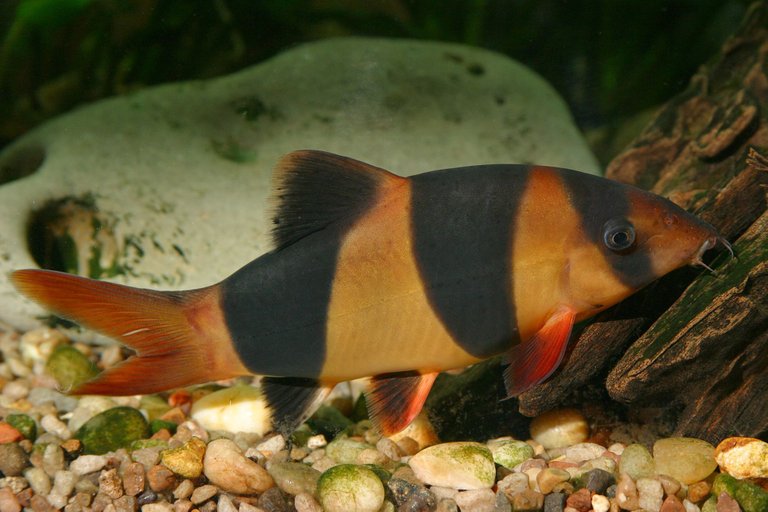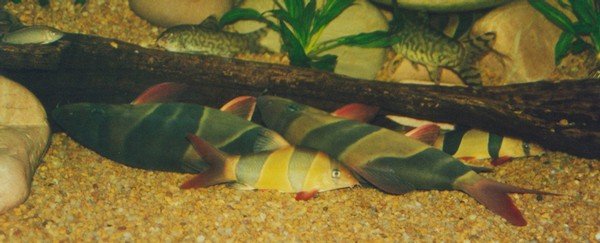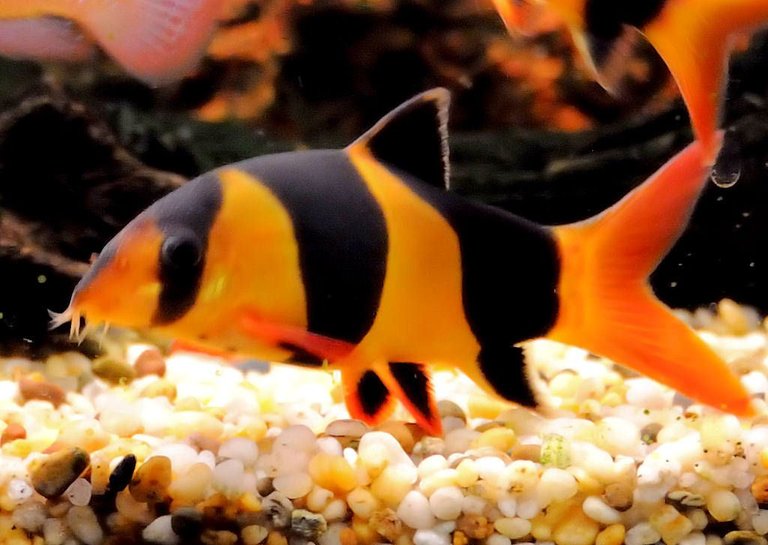Material Safety Data Sheet

Scientific name: Chromobotia macracanthus (formerly Botia macracanthus)
Family: Cobitidae
Vernacular name: Loche clown, botia
Size: 35 cm for the male and 35 cm for the female
Origin: Indonesia, Sumatra, Thailand and Borneo
pH: between 6.5 and 7
GH: between 5 and 10
Temperature: between 24 ° C and 30 ° C
Description
The botia has a laterally compressed body, stocky, a bulging back and a flat stomach. Its head, rather large, is provided with a mouth which can stretch to seize its prey and which carries 4 pairs of barbillons. His eyes are large and have thorns that allow him to pierce the shells of snails and then eat them, we must also pay attention to its spines during handling. Its body is yellow-orange and it is crossed by three black bands. Its pectoral fins, ventral and caudal are orange or red, the dorsal fin, it is black. In pet stores, they are sold as snail eaters, it's true but generally we do not tell you that they can reach 35 cm and that they have specific needs. As the name implies, this fish is a clown when properly maintained, this fish is very active and stirring, it can sometimes emit some kind of snapping during food distributions or territory problems.
It is sometimes found lying on its side like a dead fish! But it only rest, this position can sometimes worry the owner.

Maintenance
This fish is very sensitive to variations in water parameters; it is necessary to be very careful especially during the period of acclimatization, if the parameters do not suit him it is possible that it develops the Ichthyophthirius (disease of the white points). The botia is a gregarious fish, it must be kept in groups (5 to 6 individuals minimum) in an aquarium which must make, at least, 350 liters. If we keep this fish alone its behavior changes, it is fearful and "has fun" little.

The botia lives in the bottom of the tray so the substrate of your aquarium should not be sharp to prevent it from getting hurt. This fish appreciates the shadows and the bins planted, it also needs to have all sorts of hiding places like half coconut stones or roots. The filtration of the tank must be strong enough (3 times the volume of the tank per hour), the rejection of the filter should be directed upwards to avoid that there is too much current at the bottom of the aquarium.
Food
The botia is an omnivorous fish, it does not accept glitter and other granules or flakes, it likes living food and frozen (worms, artemias, tubifex, daphnies ....) but also spinach, cucumbers and zucchini, it will also feed snails present in your tray.
Reproduction
Sexual dimorphism: The females are less colored and smaller than the males, the tips of the caudal fin of the males is bent inwards. Reproduction difficult and very very rare in aquarium.
